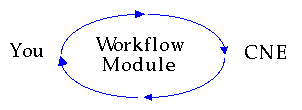
The history of technologies for supporting materiel and information processes shows three stages of performance models: mapping, measurement, and anticipation. Mapping is the stage in which a process interpretation and notation for representing it are proposed and are used to observe and design processes. Measurement is the stage in which data are collected to allow performance assessments of the mapped process. Anticipation is the stage in which a model is used to predict the performance of future configurations of the process; it is used extensively to assist in process redesign. Queueing network modeling technology is an example of a mature technology for analyzing the throughput and response time of client-server computing systems. It began to appear as a mapping tool in the mid 1960s; the maps led to new measurement tools by the mid 1970s and the modeling technology was in wide use by the mid 1980s (MenascÚ et al 1994).

MRH
8/31/94